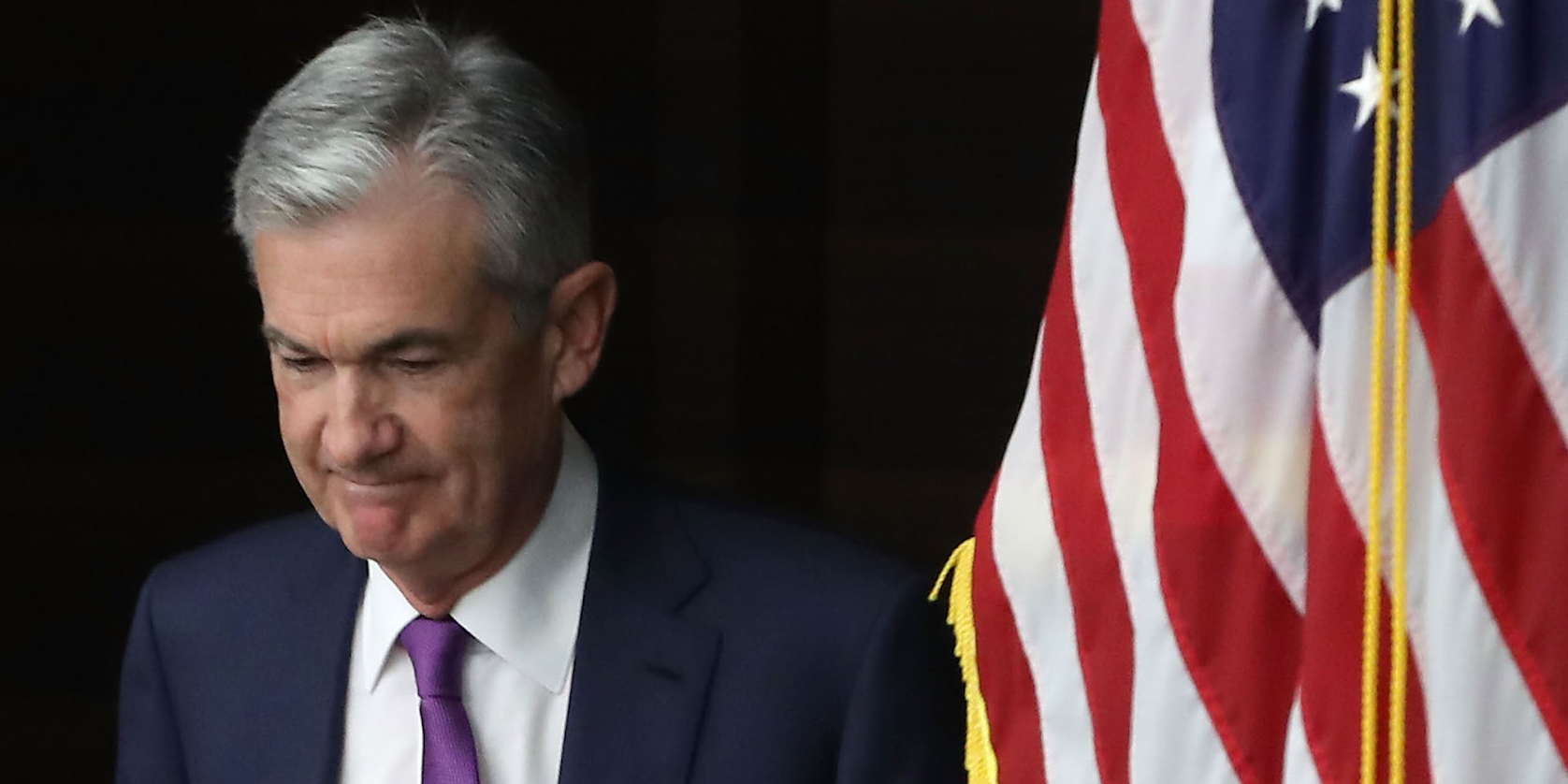- The Federal Reserve lowered interest rates by 50 basis points on Tuesday in an emergency cut to combat the risk of coronavirus on the US economy.
- It was the first emergency rate cut since the financial crisis in 2008.
- Here’s a timeline of the last seven times the Federal Reserve handed down an emergency rate cut, and the events that spurred the move.
- Read more on Business Insider.
On Tuesday, the Federal Reserve slashed interest rates by 50 basis points to combat the risk of coronavirus on the US economy.
The lowered rate was the first emergency cut since the financial crisis in 2008. While bond markets had been pricing in at least a quarter-point reduction in March, the timing of the cut came as a surprise – it was expected that the Fed would make a move at its next scheduled meeting, March 17-18.
But the Fed didn’t wait to ease monetary policy, one of its only tools to aid the economy. It’s a rare move, but an action that the Fed has taken before amid events that presented a threat to the economic expansion in the US.
“The fundamentals of the US economy remain strong. However, the coronavirus poses evolving risks to economic activity,” the Federal Open Market Committee said in a statement.
The Fed added that it was "closely monitoring developments and their implications for the economic outlook and will use its tools and act as appropriate to support the economy."
Tuesday's surprise interest-rate cut is unusual compared to recent history in that it occurred against the backdrop of a strong US equity market over the last six months, Lori Calvasina, head of US equity strategy at RBC Capital Markets, wrote in a note to clients Wednesday.

"All of the other emergency cuts that we examined occurred following extended periods of weakness in the stock market," she said. Before coronavirus panic sent stocks into a tailspin at the end of February, markets had been continually pushing higher.
Here are the last seven times the Federal Reserve did an emergency rate cut, how much it lowered rates, and the event that sparked the action from the central bank.
1. October 2008 — Lehman falls

Size of cut: 50 basis points
Reason for cut: In September 2008, Lehman Brothers Holdings collapsed, sending markets into panic and raising concerns that a recession would soon hit the US economy.
"Incoming economic data suggest that the pace of economic activity has slowed markedly in recent months. Moreover, the intensification of financial market turmoil is likely to exert additional restraint on spending, partly by further reducing the ability of households and businesses to obtain credit. Inflation has been high, but the Committee believes that the decline in energy and other commodity prices and the weaker prospects for economic activity have reduced the upside risks to inflation," the Federal Open Market Committee said in a statement in October 2008.
2. January 2008 — Stock market crash

Size of cut: 75 basis points
Reason for cut: Recession risks mounted as stocks tumbled.
"The Committee took this action in view of a weakening of the economic outlook and increasing downside risks to growth," the FOMC said in a statement.
"While strains in short-term funding markets have eased somewhat, broader financial market conditions have continued to deteriorate and credit has tightened further for some businesses and households. Moreover, incoming information indicates a deepening of the housing contraction as well as some softening in labor markets," it said.
3. August 2007 — Subprime mortgage crisis

Size of cut: 50 basis points
Reason for cut: The subprime mortgage crisis, famously depicted in the movie "The Big Short." It sent financial markets into turmoil and contributed to a recession in the US.
The FOMC said that the rate cut reduction was "to promote the restoration of orderly conditions in financial markets."
4. September 2001 — 9/11 terrorist attacks

Size of cut: 50 basis points
Reason for cut: The terrorist attacks of September 11, 2001.
A few days after the attacks, the Fed lowered rates to provide liquidity to markets.
"Particularly important was providing liquidity to financial firms, which constantly buy and sell assets, because they must make payments with either funds from recently sold assets or money borrowed from banks," wrote Christopher Neely, formerly the vice president of research at the Federal Reserve Bank of St. Louis, in a 2002 article on the Fed's actions.
He continued: "During times of crisis, however, banks avoid making such loans because falling asset prices threaten the value of the collateral. An interruption in bank lending to financial firms could potentially set off a domino chain of bankruptcies that would bring the financial system to a halt. Such an event would quickly disrupt the whole economy through its effect on investment, including new homes, and on durable consumer goods."
5. April 2001 — Weak economy

Size of cut: 50 basis points
Reason for cut: The Fed cut rates in an attempt to avert a recession, according to CNN Money.
A severe slowdown in capital spending by big corporations "threatens to keep the pace of economic activity unacceptably weak," the central bank said in its statement, CNN Money reported in 2001.
6. January 2001 — Tech bubble

Size of cut: 50 basis points
Reason for cut: Between 2000 and 2001, the tech bubble - also known as the dot-com bubble - burst, leading equities into a bear market. That prompted the Fed to lower rates to boost the faltering economy.
"These actions were taken in light of further weakening of sales and production, and in the context of lower consumer confidence, tight conditions in some segments of financial markets, and high energy prices sapping household and business purchasing power," officials said, according to Bloomberg.
7. October 1998 — Russia, LTCM collapse

Size of cut: 25 basis points
Reason for cut: Russia's financial crisis and the collapse of Long-Term Capital Management, a hedge fund, spurred the Fed to act to prevent a credit crunch.
"The action was taken to cushion the effects on prospective economic growth in the United States of increasing weakness in foreign economies, and of less accommodative financial conditions domestically," the FOMC said in a statement, according to CNN.
"The recent changes in the global economy and adjustments in U.S. financial markets mean that a slightly lower federal funds rate should now be consistent with keeping inflation low and sustaining economic growth going forward," the statement said.

